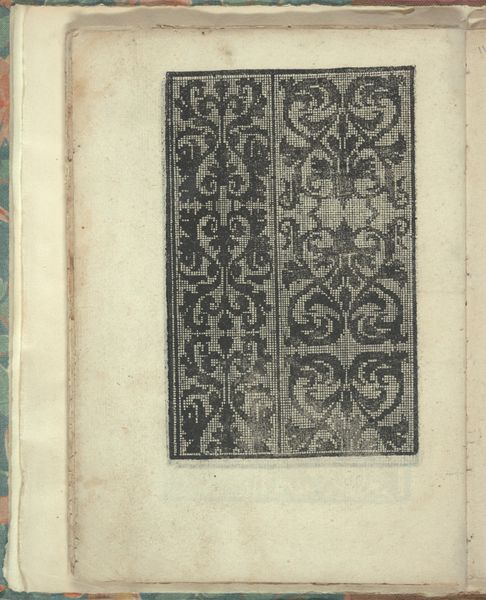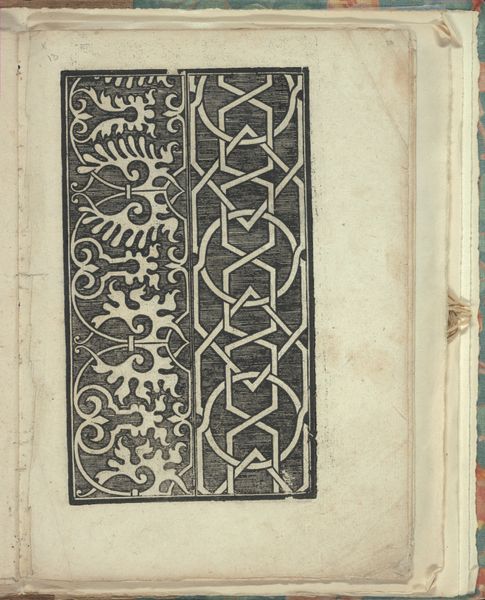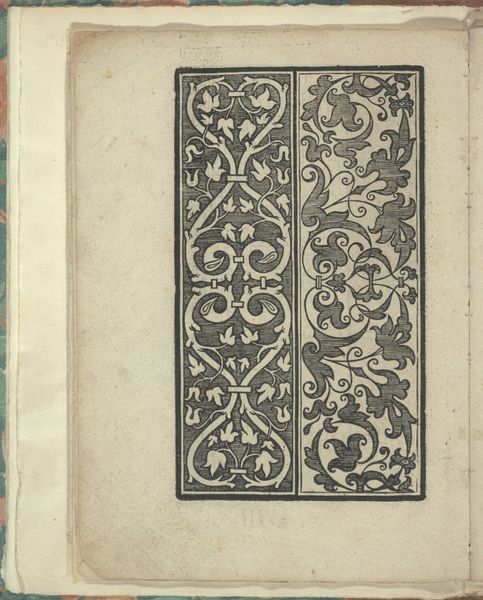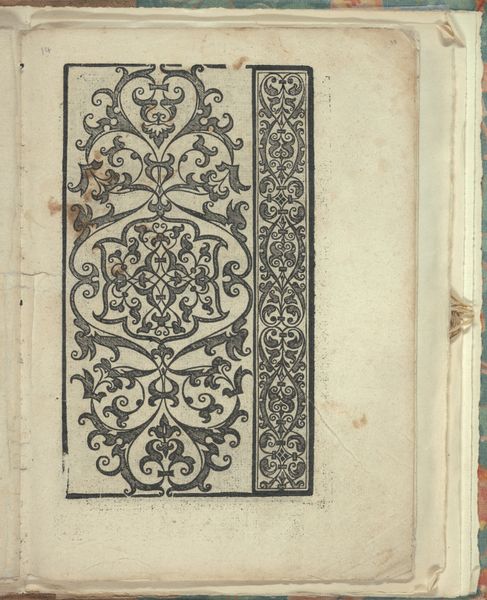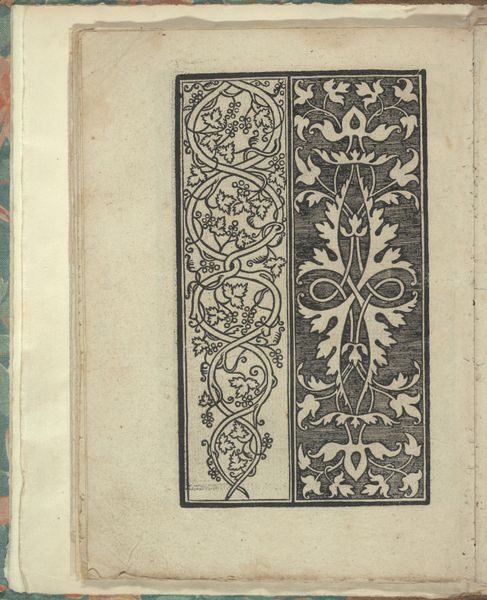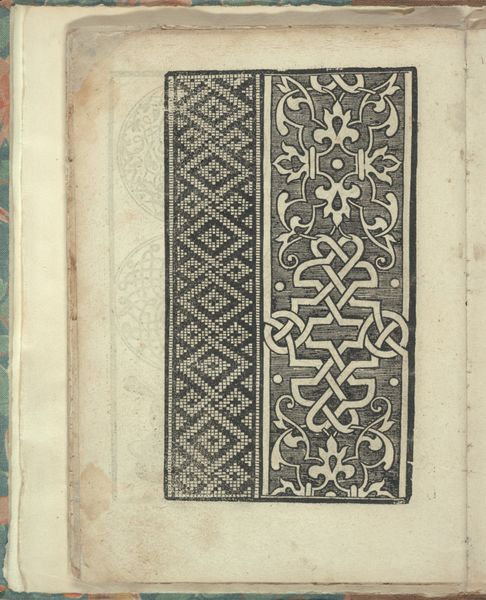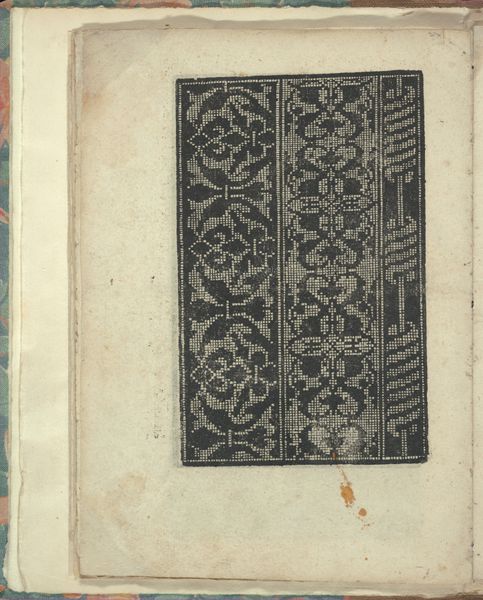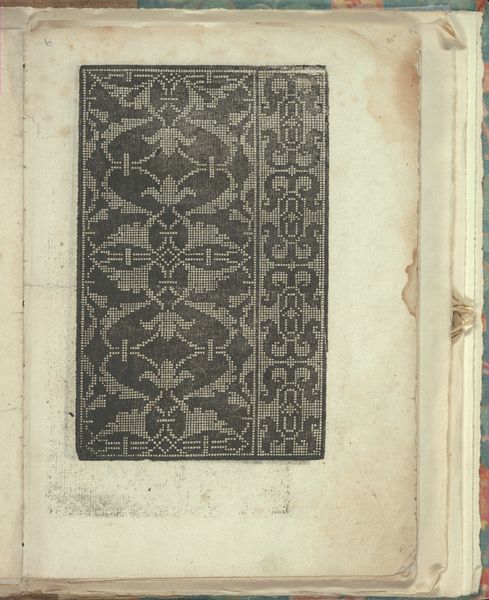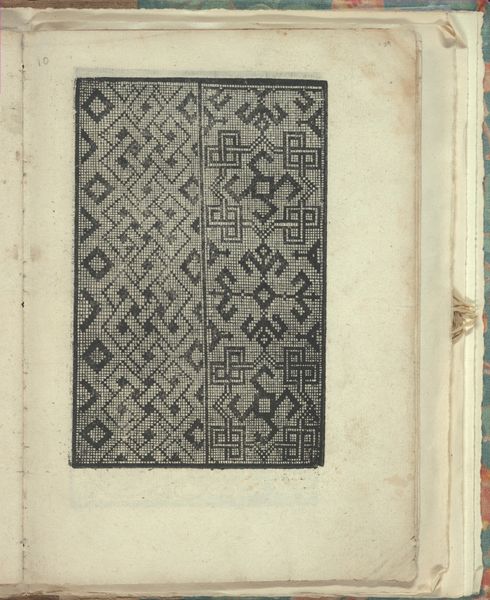
Opera Nova Universali intitulata Corona di racammi, page 31 (verso) 1530
0:00
0:00
drawing, print
#
drawing
# print
#
11_renaissance
#
decorative-art
Dimensions: Overall: 8 7/8 x 6 7/8 in. (22.5 x 17.5 cm)
Copyright: Public Domain
Editor: This is a page from Giovanni Andrea Vavassore's "Opera Nova Universali intitulata Corona di racammi," created around 1530. It's a print on paper featuring two distinct decorative panels. The stark black and white contrast is really striking! What stands out to you about this work? Curator: For me, this print acts as a powerful artifact. We often forget how knowledge, particularly for women, was circulated and controlled during the Renaissance. Pattern books like this one served as a visual language for embroidery, empowering women to create, while also dictating acceptable forms of artistry. Do you notice the subtle differences between the two panels? Editor: Yes, one seems to feature more flowing, vine-like patterns, while the other uses leaf and berry motifs. What's significant about that difference? Curator: Well, consider this: Who had access to such designs? Were they a reflection of the natural world accessible to all, or a carefully curated and idealized version? The printing press democratized access to these images, yet access remained sharply divided along lines of gender, class and geographic location. Did the women recreating these patterns see themselves represented, or were they merely echoing a prescribed standard? Editor: That’s a fascinating point. It highlights the complex relationship between empowerment and constraint within these historical materials. Curator: Exactly. This page is more than just a decorative pattern. It’s a tangible piece of social history. Editor: Thinking about it that way really deepens my appreciation for its significance. I hadn’t considered the implications of access and control. Curator: It’s these kinds of questions that help us excavate the social fabric woven into these images. It pushes us to consider the role art played, and still plays, in both reflecting and reinforcing societal norms.
Comments
No comments
Be the first to comment and join the conversation on the ultimate creative platform.

